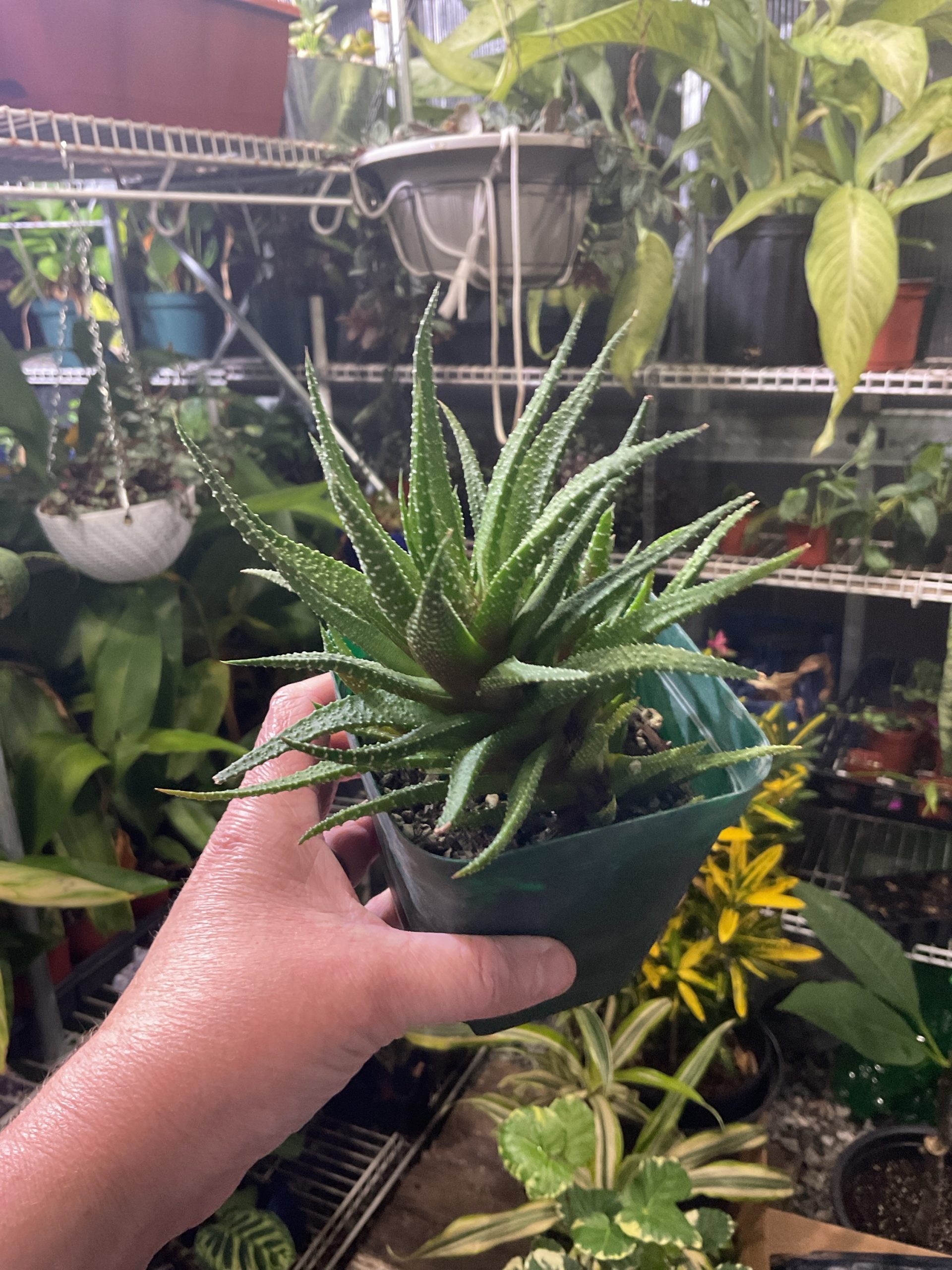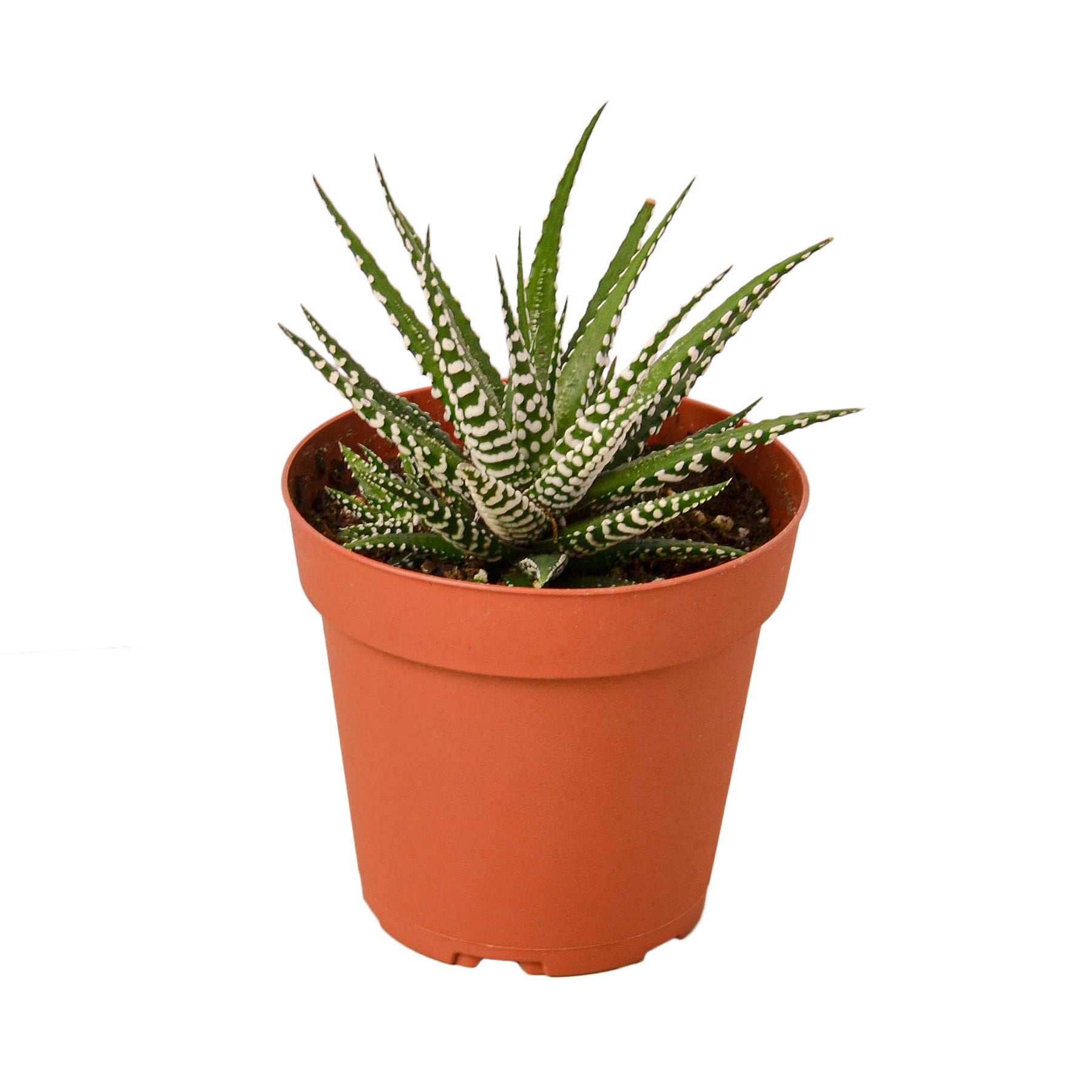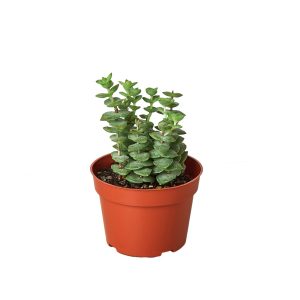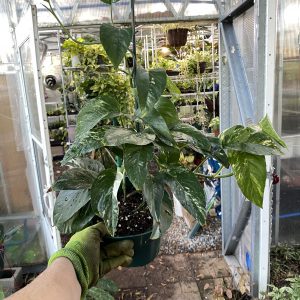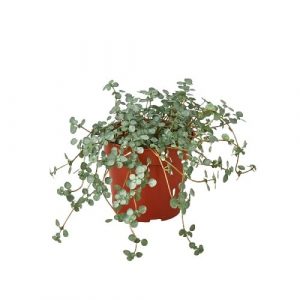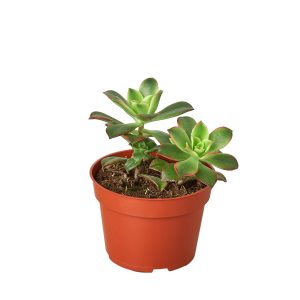Haworthia Zebra, scientifically known as Haworthiopsis attenuata (formerly Haworthia attenuata), is a popular succulent appreciated for its striking appearance and easy care requirements. Here are some key details about this plant:
Appearance:
Rosette Form: Haworthia Zebra grows in a rosette pattern, with tightly packed, fleshy leaves that form a symmetrical, clustered shape.
Leaf Pattern: The leaves are triangular, elongated, and feature distinctive white stripes or bands that resemble a zebra’s stripes. These stripes often create an eye-catching contrast against the dark green or deep brownish-green base color of the leaves.
Size: Typically, these succulents remain relatively small, growing up to about 6 inches (15 cm) tall, making them suitable for indoor spaces or as part of a succulent arrangement.
Care Tips:
Light: They prefer bright, indirect light. Avoid direct sunlight, as it can cause the leaves to burn or lose their vibrant coloration.
Watering: Allow the soil to dry out between waterings, and water sparingly to prevent root rot. These plants are adapted to survive in arid conditions and are sensitive to overwatering.
Soil: Well-draining soil is crucial to prevent waterlogging, as excessive moisture can lead to root rot.
Temperature: Haworthia Zebra thrives in average room temperatures and can tolerate slightly cooler conditions but should be protected from frost.
Maintenance:
Repotting: Repot when the plant becomes root-bound or when the soil becomes depleted, typically every 2-3 years.
Propagation: They can be propagated through offsets or by leaf cuttings. Offsets (pups) naturally emerge from the base of the mother plant and can be separated once they have developed their own root system.
Varieties:
Variegated Varieties: Some variations display different variegation patterns, with white or yellow markings on the leaves, adding to their ornamental appeal.
Toxicity:
Non-Toxic: Haworthia Zebra is generally non-toxic to humans and pets, making it a safe choice for households with animals or small children.
Haworthia Zebra is a visually appealing succulent that requires minimal care, making it a popular choice for both beginners and experienced plant enthusiasts. Its distinctive appearance and adaptability to indoor conditions have contributed to its popularity as a decorative houseplant.
